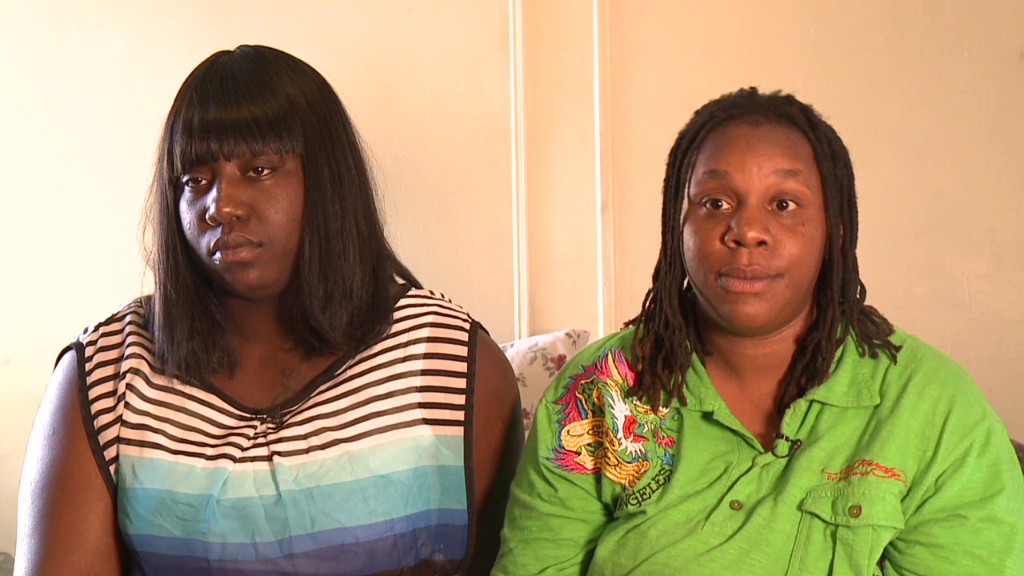
The middle class is struggling to survive and shrinking before our eyes, the Pew Research Center reported on Wednesday.
"America's middle class has endured its worst decade in modern history," the Pew Research Center said in its report. "It has shrunk in size, fallen backward in income and wealth, and shed some -- but by no means all -- of its characteristic faith in the future."
Of the 2,500 people Pew surveyed, 85% of those who identify themselves as middle class say it is more difficult now than it was a decade ago to maintain their standard of living. The report also found that the middle class is a much smaller part of the population than it used to be, while the poor and rich extremes of society are expanding.
The biggest issue facing the middle class is that their wealth is deteriorating, said economist Richard Fry, who co-authored the report. The housing crisis eroded much of the middle class' net worth, creating a "lost decade" in terms of economic well-being for this group.
"For middle-income households, a lot of wealth was in their home, so the housing bust really impacted their nest eggs," he said. "Middle-income families are the only ones whose nest eggs have plummeted."
The mean net worth (assets, such as a home or retirement account, minus debt) of middle-class families plunged 28% to $93,150 in 2010 from $129,582 in 2001. Meanwhile, the mean net worth of the upper class edged 1% higher over the course of the decade to $574,788. Fry said the upper class was better able to cushion themselves against housing losses because they are more diversified and have much of their wealth in stocks, bonds and other investments.
Related: Debt busters! 'How I'm digging out of debt'
The middle class also took a bigger hit on the pay front. While incomes across all class levels declined for the first time since World War II, the middle class saw the biggest decline, with a median income for a four person household declining to roughly $70,000 in 2010 from about $73,000 in 2001, the report said. The median income for the lower class is $23,000 and about $113,000 for the upper class. The middle class is also giving up more income to the rich. In 2010, the upper income group took in 46% of all income, up from 29% in 1970. The middle income group took in 45% of income, down significantly from 62% in 1970.

A shrinking but more diverse class: Just more than half - 51% - of the population was middle class in 2011 compared to 61% in 1971, according to the Pew Research Report. At the same time, the segments of the population who consider themselves lower or upper class have grown.
Even though the middle class has shrunk, it has grown more diverse over the past 40 years. Whites are less dominant, comprising 70% of the middle class in 2011, compared to 80% in 1971. Hispanics have made significant gains in joining the middle class in that time, climbing to 13% of the group, up from 8%. Blacks, too, have made gains, albeit smaller. They now comprise 11% of the middle class, compared to 9% in 1971. Asians and Pacific Islanders made up 5% of the middle class in 2011, compared to 3% in 1971. The "other" category rose from 1% to 2%.
Related: Which party does the middle class favor?
As for the sexes, 53% of women now put themselves in the middle class category compared to 46% of men. This has changed since 2008, when there wasn't much difference in the percentage of men (51%) and women (54%) who considered themselves middle class.
Who is to blame? The middle class blames Congress as the lead culprit for its demise, but blames itself least of all. While 62% of middle class respondents to the Pew survey blamed Congress for their worsening state, 54% blamed banks and financial institutions, 47% blamed corporations, 44% blamed the Bush administration, 39% blamed foreign competition and 34% blamed the Obama administration. Just 8% of all respondents blamed the man (or the woman) in the mirror.
Related: Over 50 with student debt
Going forward, less than one-fourth (23%) of the middle-class respondents said they were "very confident" that they would have enough money to get through retirement. Some 43% said their children's standard of living would be better than their own, compared to 51% in a 2008 survey. Some 26% of respondents said their children's standard of living would be worse than their own, compared to 19% in a 2008 survey.
"Middle-class Americans look to the economic future - their own, their children's, and the nation's - with a mix of apprehension and muted optimism," the report said.


